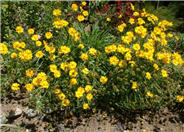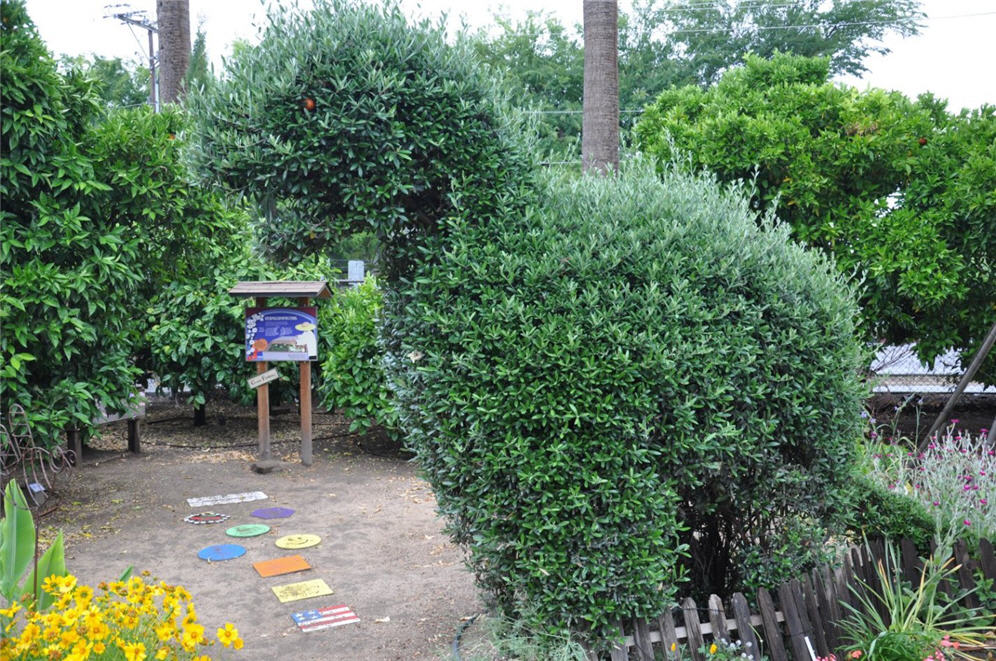
Common name:Olive, Edible Olive
Botanical name:Olea europaea
This broad tree will slowly grow to 25'-30' tall and wide. It has small, grey-green, evergreen leaves. Small white fragrant flowers bloom in spring, followed by fleshy black fruit that appears in fall. Fruit is messy and can stain sidewalks. There are cultivars that do not produce fruit. Some folks are allergic to the blooms. This tree is very long lived, with a beautiful gnarled trunk. It prefers full sun and low watering in summer months (twice a month) and none during the winter, when established.

Common name:Lance Coreopsis
Botanical name:Coreopsis lanceolata
This long lived perennial reaches 2' tall and 1' wide. Leaves narrow, growing in a rosette at base. Flowers are 2" across, yellow and bloom in late spring and summer, held above the foliage. It makes a good cut flower. It prefers full sun to light shade. It needs a medium amount of watering in well draining soil. Deer and butterflies love this flower.

Common name:Mullein Pink, Rose Campion
Botanical name:Lychnis coronaria
Magenta-pink blooms in May through July on mossy-soft, grey-green leaves highlight this plant. The 1'-2' stems branch at the top and are loaded with flowers. It should be grown in slightly moist, well-drained soil, and is a great companion to Lamb's Ears. -Holland WIldflower Farm

Common name:Mullein Pink, Rose Campion
Botanical name:Lychnis coronaria
Magenta-pink blooms in May through July on mossy-soft, grey-green leaves highlight this plant. The 1'-2' stems branch at the top and are loaded with flowers. It should be grown in slightly moist, well-drained soil, and is a great companion to Lamb's Ears. -Holland WIldflower Farm
| Designer: Cooperative Extension | Hop Scotch |
Photographer: GardenSoft |
Soils and Compost:
Practice grass-cycling by leaving short grass clippings on lawns after mowing, so that nutrients and organic matter are returned to the soil.
Water Saving Tip:
Water-wise plants can be beautiful as well as practical.
Take your 'My List' Hydrozone Report to a landscape designer, or local nursery, when selecting and purchasing plants.
Integrated Pest Management:
Attract, or buy beneficial insects such as ladybugs and lacewings to control pest outbreaks in your garden.
